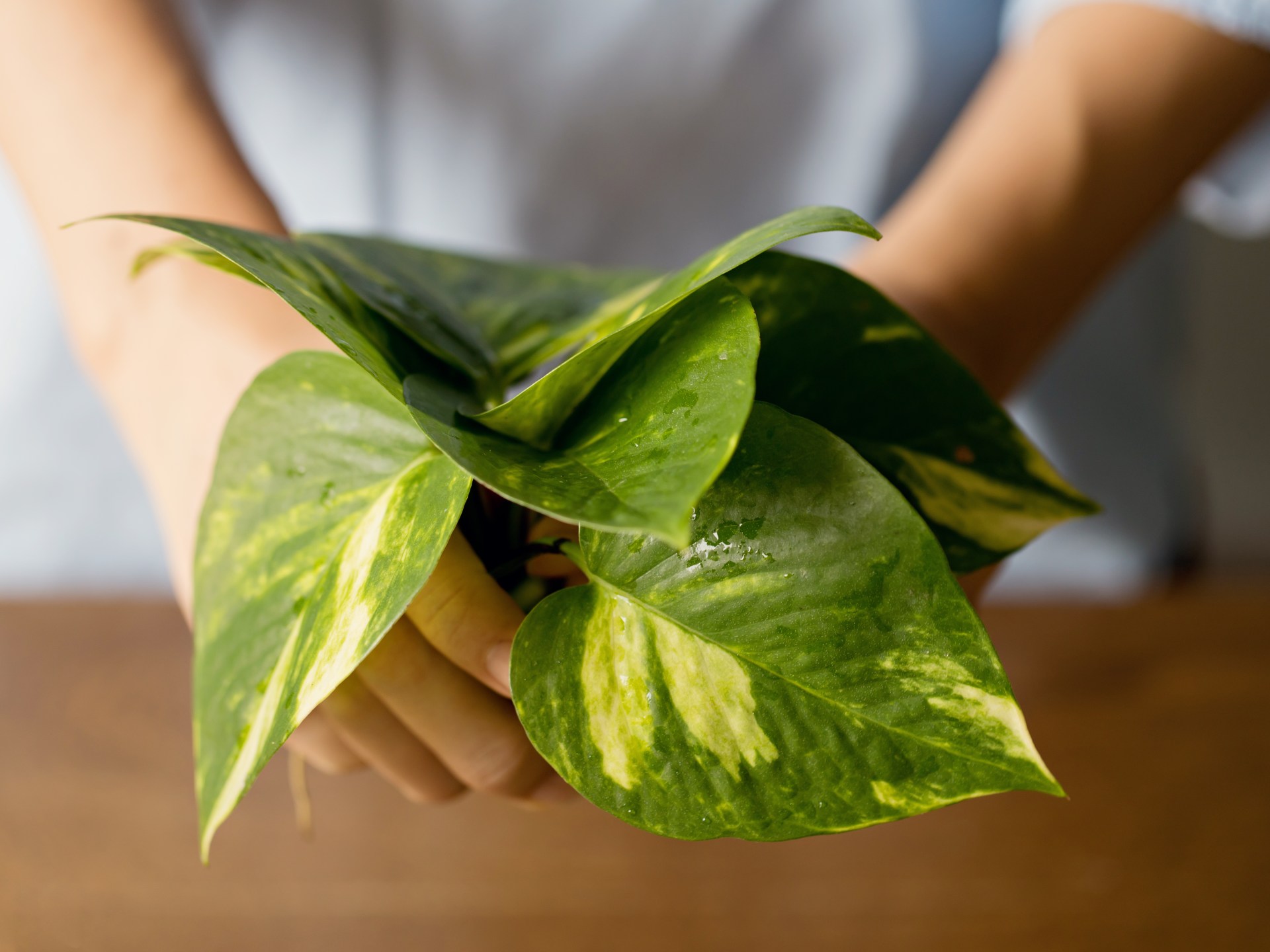The pothos plant, also known as ivy (Shutterstock)
If you love houseplants, but struggle to keep them fresh and fresh without them wilting, especially during seasonal periods, the pothos plant is one of the easiest plants to grow and care for.
In this report, we review tips and tricks for caring for this plant, with the most important recommendations regarding watering and appropriate lighting to intensify its growth and prevent its wilting.
Pothos is an easy-to-care-for houseplant with attractive, heart-shaped leaves and long, branching stems that can climb walls (Shutterstock)
The most important information about the pothos plant
Pothos, scientifically known as Epipremnum aureum, also called Devil's Ivy, is an easy-to-care-for houseplant with attractive, heart-shaped leaves and long, branching stems that can climb walls.
Native to French Polynesia, it is considered a tropical vine. It also grows in tropical and subtropical forests around the world, and has been cultivated as an ideal houseplant for beginners in plant care.
With proper care, the pothos tree can be a long-term addition to any home, due to its ease of care and growth. It thrives in particular when you take care not to expose it to direct sunlight, and make sure to irrigate the surface of the soil whenever it dries to a depth of 5 or 6 centimeters, that is, approximately the length of a finger when planted in the soil of the plant.
Finally, it is preferable to spray the plant with water every few days because it prefers relative humidity.
Pothos is an ideal houseplant for beginners in plant care (Shutterstock)
Plant care and correct watering steps
Caring for a pothos tree does not require much effort, as these plants adapt to a wide range of environments and climates. They continue to grow in bright, indirect light, as well as when kept in a low-light spot.
It can also be grown in dry, well-filtered soil, such as loamy or sandy soil, or directly in water vases. Although it will thrive in soil rich in nutrients and growth promoters, it will also thrive in poor soil without the need to water it with the usual plant thickeners.
All the plant needs is watering whenever the soil dries, and not flooding the plant with water, or making it too thirsty without watering for more than a continuous week.
Pothos plant's sun requirements
The lack of direct sun is the ideal situation for devil's ivy, or pothos, as when the plant's beautiful leaves are exposed to direct sunlight, especially in the afternoon, they turn brown and burn to death.
Other than that, pothos is flexible regarding its sunlight requirements and hence the plant can be placed in a fully shaded location and it will continue to bloom for some time.
Ideally, light shade or intermittent sun are the best options for placing the plant indoors.
If your pothos plants are spotted with white or yellow, they may not grow well in low light, or they may lose their coloring if the light is too low.
This is because only the green parts of the leaves produce energy for the entire plant, so it must be able to get enough light to obtain energy, otherwise its growth will slow down or the leaves will compensate for the lack of light by becoming greener and losing their distinctive coloring.
The pothos tree does not require much effort in caring for it (Shutterstock)
Plant pothos plants in water
To transform a plant from a plant pot into a water jug or bottle for a distinctive aesthetic appearance, cuttings can be taken from the mother plant, rooted in water, and helped to continue growing in water indefinitely by exposing it to indirect light and renewing the water every few weeks to prevent contamination.
Take care not to suddenly move a plant growing in the soil to a pot of water or vice versa, as the pothos adapts to the growth routine and may not survive when exposed to this severe change.
Steps to thicken the plant
Pothos can be easily rooted by placing cuttings from the plant in water until its roots grow and the plant begins to grow independently of the parent tree.
So you can grow any number of plants just by cutting and rooting the stem cuttings in the right way.
The pothos adapts to the growth routine and may not survive when exposed to this severe change or moving from soil to water or vice versa (Shutterstock)
The pothos plant can be cut using the following steps:
Searching for the root of successful rationalization
Looking directly under the leaf or stem for a small root nodule, these little bumps are the key to repotting and transplanting a new plant from the parent pothos tree.
It's just that you'll need to cut a few inches of the healthy stem just before a node and include a node or two with the new cutting, so that the new roots will come from that cutting.
Cleaning around the roots
Then remove any leaves that are too close to the node, especially those that may end up submerged when you place the new cutting in the container.
Transfer the plant to a water bottle
Place the plant cuttings in the chosen glass container, placing it in a place that receives bright or moderate indirect light.
Then check the root growth from the node on a weekly basis and add fresh, lukewarm water when needed.
Transfer to new soil
If you want to transplant your new plant cuttings from the container into a pot with well-draining soil mix, it is recommended to wait until the rootstock is 6cm or more long.
After transfer, the soil is saturated with room temperature water and placed in bright, indirect light, with the plant drying between each irrigation.
Source: websites

